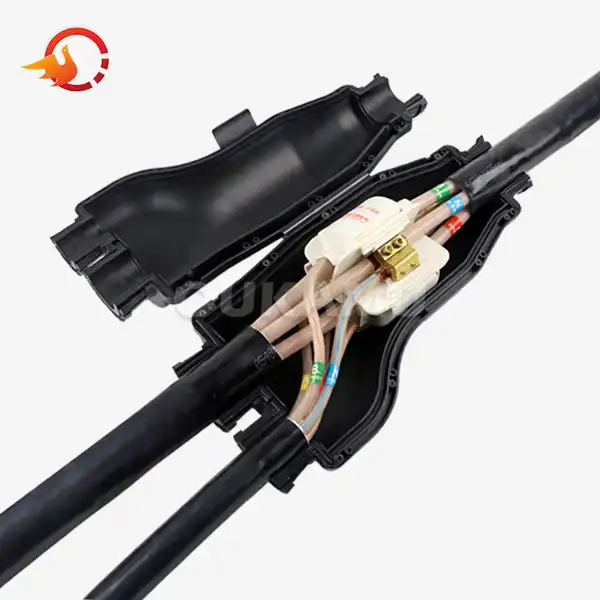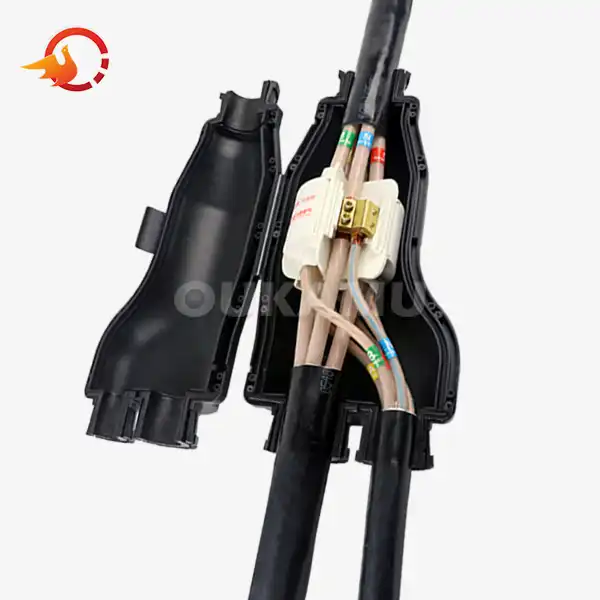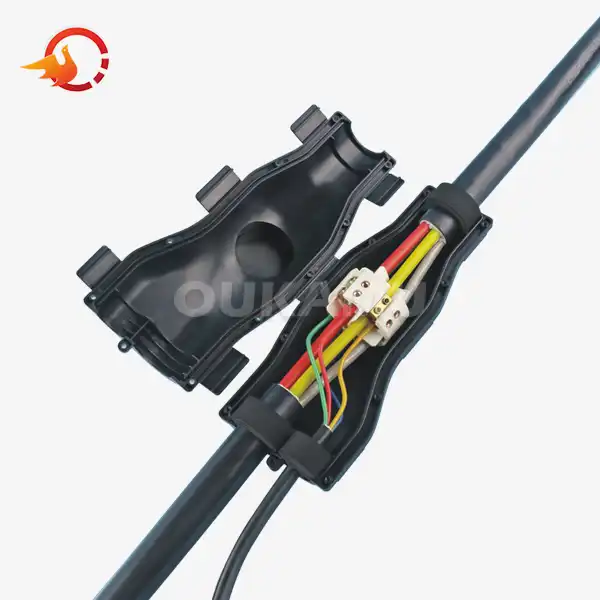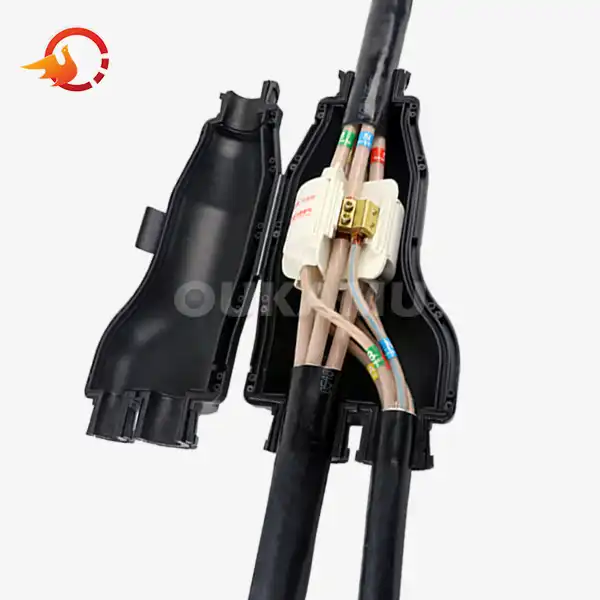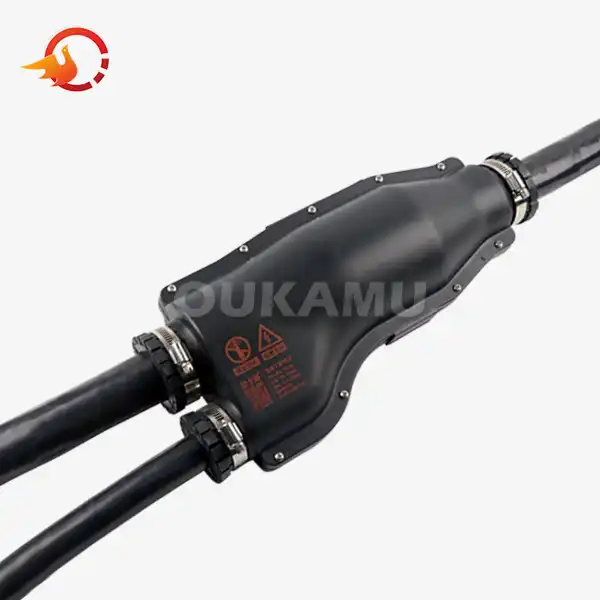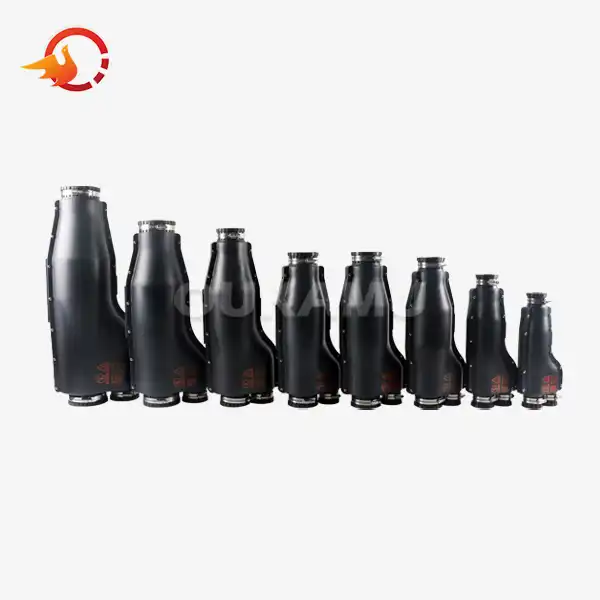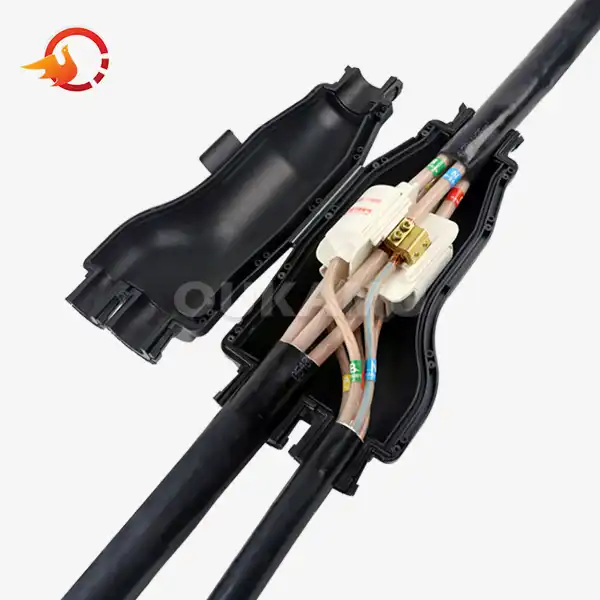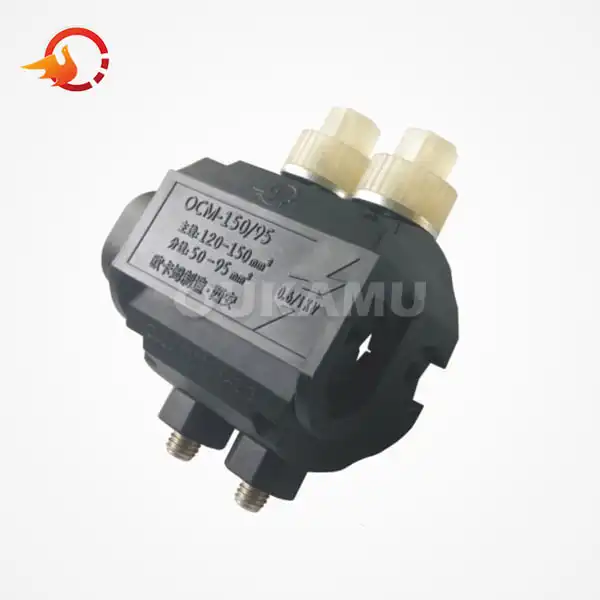Which method of cable joint is used for low voltage cables?
 2024-11-14 15:50:22
View:389
2024-11-14 15:50:22
View:389Low Voltage Cable Joint Connectors are vital for powering various industries, and proper cable jointing is essential for ensuring safety and efficiency. Cable jointing connects cables or electrical devices and is crucial for reliable performance. At Xi'an Oukamu Electric Co., Ltd., we specialize in high-quality cable connection products designed for safety and reliability. Our innovative cable joint solutions support construction, municipal, and railway sectors, making us a leader in the field. We offer a range of products to meet your specific needs, ensuring optimal performance in every installation.
Types of Cable Joints for Low Voltage Cables
Low voltage cables, used in systems under 1kV, require proper jointing techniques for safety and longevity. Common methods include heat shrink, cold shrink, and resin-filled joints, ensuring reliable and secure connections in power distribution and building wiring systems.
Mechanical Joints
Mechanical cable joints are simple and reliable, using pressure to connect conductors with clamps, lugs, or splice kits. They are easy to install without heat or special tools, making them ideal for on-site installations in varying conditions.
Heat Shrink Joints
Heat shrink joints are popular for Low Voltage Cable Joint Connectors because they offer superior weather protection. Heat shrink tubing provides insulation and protection against contaminants, dust, and moisture by forming a tight seal around the cable when heated. They are often used under difficult circumstances.
Cold Shrink Joints
Cold shrink joints are similar to heat shrink joints but offer the advantage of not requiring a heat source. Instead, these joints use a pre-stretched rubber sleeve that contracts around the cable when the tension is released. Cold shrink joints are particularly useful in installations where it is difficult to use heat, such as in confined spaces or areas with flammable materials. They provide strong insulation and sealing without the need for special tools.
Resin Joints
Resin joints are another effective method for joining low voltage cables. These joints use a resin-based material that is applied to the cable joint to provide insulation and sealing. The resin hardens over time, creating a durable, long-lasting joint. This method is ideal for installations that require robust protection from environmental elements such as moisture or corrosive substances. Resin joints are commonly used in underground cable installations, where they help ensure the longevity and reliability of the connection.
Factors to Consider When Choosing a Cable Joint Method
Selecting the right cable jointing method for Low Voltage Cable Joint Connectors depends on several factors, each of which can impact the performance and longevity of the electrical system. Some of the key considerations include:
Environmental Conditions
Environmental conditions play a key role in selecting the appropriate cable jointing method. For joints exposed to moisture or extreme temperatures, heat shrink or cold shrink joints, with superior sealing and insulation, are ideal. In areas prone to chemicals, corrosion, or mechanical stress, resin or mechanical joints are preferred for their enhanced durability and strength.
Ease of Installation
Ease of installation is crucial in many projects, especially in construction. Mechanical joints are quick and simple, requiring no special tools. However, if greater environmental protection is needed, heat shrink joints offer superior sealing but take longer to install. The choice depends on project timelines and installation complexity.
Cost and Long-Term Reliability
Mechanical joints have a lower upfront cost, while heat shrink and resin joints are more expensive due to materials and tools. However, their long-term reliability and durability often justify the higher initial cost, especially in safety-critical industries
Compliance with Industry Standards
To guarantee that the cable joints fulfill safety, environmental, and performance requirements, adherence to industry standards and laws is crucial. It is essential to confirm that the chosen technique complies with applicable industry and application standards when choosing a cable joint. By doing this, risks will be reduced and the cable joints' long-term performance will be guaranteed.
The Role of Cable Joint Connectors in Enhancing Electrical System Safety
The primary goal of any cable jointing method is to enhance the safety and reliability of the electrical system. Low voltage cable joint connectors, when properly chosen and installed, provide a secure connection between cables, ensuring minimal loss of power and preventing dangerous faults or failures. A good-quality cable joint connector ensures that there is no physical or electrical compromise at the point of connection.
Prevention of Short Circuits and Faults
A well-made cable joint reduces the risk of short circuits, which could lead to fires or electrical outages. By using high-quality cable joint connectors, such as the integrated T-terminal connectors developed by Xi'an Oukamu Electric Co., Ltd., the risk of faulty connections is minimized. These connectors are designed to provide a robust connection without compromising on insulation, ensuring that the electrical system remains safe and efficient.
Increased Durability and Performance
The durability of cable joints is vital for smooth electrical system operation. High-performance connectors, like Xi'an Oukamu's integrated T-terminal, provide insulation, flame retardancy, and resistance to moisture and corrosion, ensuring long-term performance and reducing maintenance costs.
Cost-Effective Solution for Long-Term Needs
Choosing high-quality cable joints, like those from Xi'an Oukamu, reduces repair costs, minimizes energy loss, and prevents downtime. Reliable connectors enhance system longevity and efficiency, leading to significant long-term cost savings.
Conclusion
Low voltage cable joint connectors play a vital role in the performance, safety, and durability of electrical systems. With various jointing methods available—mechanical, heat shrink, cold shrink, and resin joints—each option offers its unique set of advantages, making it important to consider factors like environmental conditions, ease of installation, and long-term reliability. By choosing the right method for your specific project needs, you can ensure that your electrical systems continue to operate smoothly and safely.
For more information on cable joint connectors and to explore our innovative solutions, feel free to contact us at info@okmbranchcable.com.
References
1. IEC 60228: Conductors of insulated cables – International standard for low voltage cables and their conductors.
2. A Guide to Electrical Cable Joints – Engineering Practices and Standards for Low Voltage Systems.
3. Low Voltage Cable Joints: The Evolution of Connector Technology – A Technical Overview.
4. Understanding the Different Methods of Cable Jointing for Low Voltage Applications – Industry Insights.
5. Innovations in Cable Branching: The Role of Advanced Cable Connectors in Modern Electrical Systems.






